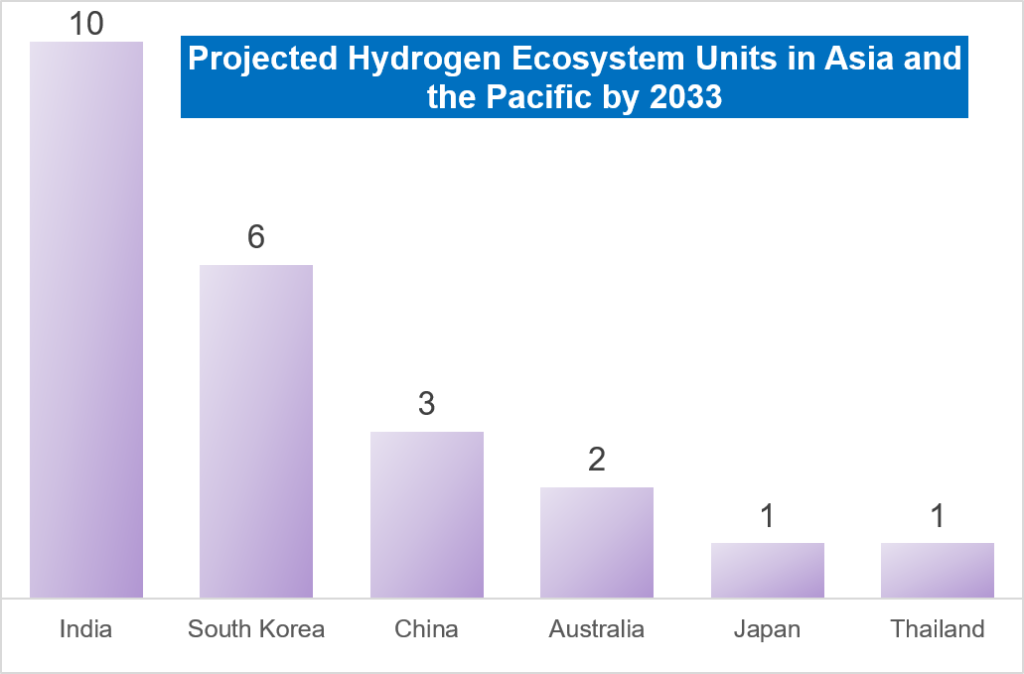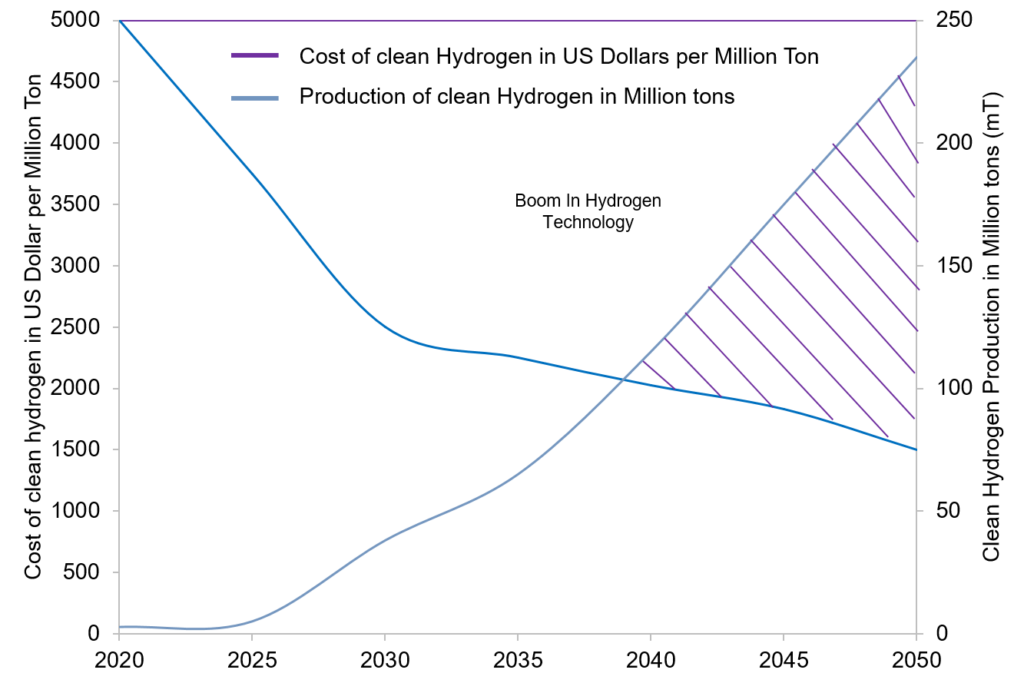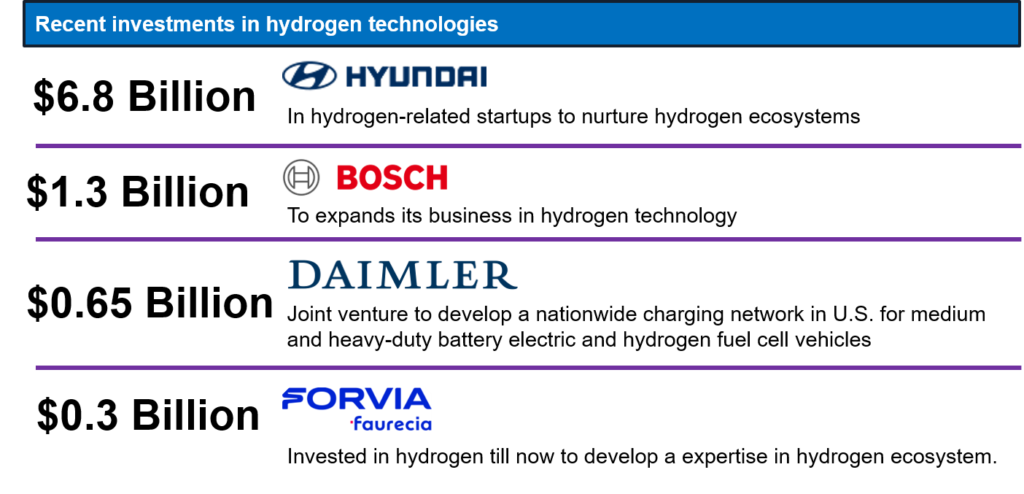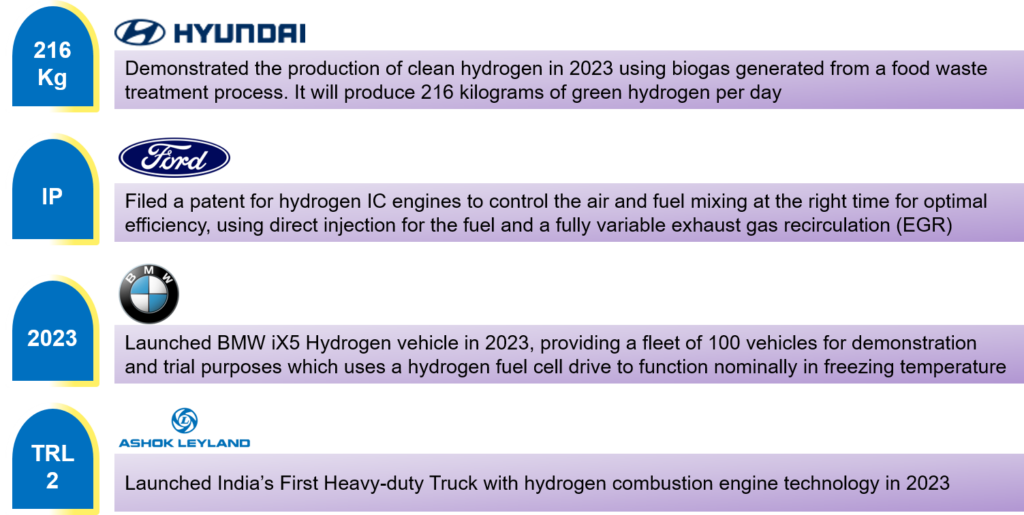The Paris (COP21) and Glasgow (COP26) agreements have outlined the need for transportation propulsion technologies to achieve maximum CO2 reduction in a short time. To achieve this, various technologies have emerged in the automobile sector, like electric vehicles, hydrogen vehicles, solar vehicles, ethanol-blended petrol (EBP), and biofuels. Currently, electric vehicles are driving carbon reduction, but they are burdening electrical grids and renewable power generation. Hydrogen-powered vehicles are another prominent technology that addresses CO2 reduction; they are expected to drive CO2 reduction in the future. Let us discuss hydrogen in the automobile industry in more detail.
Hydrogen in the Automobile Industry – An Alternate Fuel
Hydrogen is a clean alternative to fossil fuels. It can provide clean energy across the globe. Clean hydrogen includes blue, green, white, yellow, and pink hydrogen. According to the International Energy Agency, annual production of low-emission hydrogen could reach 38 Mt in 2030 globally as hydrogen is a powerful enabler for the energy transition. It has benefits for both the energy system and end-use applications. According to the Hydrogen Council, the world plans to invest $2.5 trillion in hydrogen projects by 2050. Even with the exponential growth of clean hydrogen generation technology, this technology faces the challenge of being capital-intensive. Only 4% of the production capacity for 2023 has received a final investment decision (FID). However, this percentage has almost doubled from the previous year as the demand for clean hydrogen is expanding across all sectors, including power generation, automotive, manufacturing, and heavy transport such as shipping.
Hydrogen-based IC Engines and Fuel Cell Electric Vehicles
Further, innovations in Novel degradation-resistant materials in Hydrogen Polymer Electrolyte Membrane (PEM) fuel cells are accelerating the development of hydrogen-fueled cars. Also, there has been a renewed interest in H2ICE lately, focusing on increasing the efficiency of multiport and directly injected hydrogen concepts for heavy-duty vehicles. So, is hydrogen the future of mobility?
Do we have the technology for hydrogen transition, and who are the investors?
Driving the hydrogen energy transition in the automobile sector? Let us discuss major investments in hydrogen in the automobile industry and its technological advancements.
Investments in Hydrogen Production

Figure 1: Production cost of hydrogen (In %) in the U.S.
Investment in America
Plug Power Inc. and Olin Corporation launched a joint venture called Hidrogenii to produce hydrogen and provide logistical support to the fuel cell market using its St. Gabriel Green Hydrogen Plant. It has a capacity to produce 15 tonnes of green hydrogen per day. Under the IIJA, $8 billion has been pledged to develop regional US hydrogen hubs, another $1 billion to improve the efficiency and cost-effectiveness of electrolysis, and a further $500 million to support the manufacturing of clean hydrogen equipment.
Investment in EMEA
The UK aims to establish up to 5GW of low-carbon electrolytic hydrogen production by 2030. H2 Energy Europe, a developer of large-scale green hydrogen ecosystems, received affirmation for government funding for its 20MW electrolytic hydrogen production facility at the port of Milford Haven. European Commission has set up the European Hydrogen Bank (EHB) to stimulate and support investment in sustainable hydrogen production. It aims to accelerate investment and bridge the investment gap for the EU to reach its ambitious REPowerEU targets of producing domestically 10 million tonnes (mt) of renewable hydrogen by 2030.

Figure 2 Projected Hydrogen Ecosystem Units in Asia and the Pacific by 2033.
Investment in APAC
Chinese public-private consortium made up of the Fengzhen municipal government, state-owned China Power Construction (PowerChina) Kunming Institute and Tsinghua University spin-out Rongke Hydrogen Energy is investing 33bn yuan ($4.5bn) into the world’s largest green hydrogen project using proton exchange membrane (PEM) electrolyzers. It will produce up to 50,000 tonnes of green hydrogen a year from 3GW of wind and solar power. In January 2023, the Indian government launched the National Green Hydrogen Mission to build the capability of green hydrogen production to at least 5 Mt annually by 2030. It will outlay ₹ 400 crore by 2025-26 for Hubs and other projects.
Based on these investments, the production of clean hydrogen will significantly increase from 2025. Also, the cost of clean hydrogen is expected to drop from $5 per kg to $1.5 per kg. From 2030, it is expected that hydrogen technology will see a significant boom due to increased production capacity and reduced cost of hydrogen, as per figure 3.

Figure 3: Production of clean hydrogen and cost of clean hydrogen
Recent Investment in Hydrogen Vehicles and Major Milestones

Figure 4: Investments in Hydrogen Technologies and Vehicles
Following are the recent milestones in hydrogen technologies by leading automobile manufacturers.

Figure 5: Developments in Hydrogen for the automobile industry
The investments and collaborations by the leading automobile manufacturers are driving the hydrogen energy transition.
Hydrogen in Automobile Industry: Conclusion
Billions of dollars have been invested in the development of hydrogen technology. Top leading automakers like Hyundai, BMW, and Ford have already developed full-fledged hydrogen-fueled vehicles. However, automakers are skeptical about hydrogen technology as it demands significant financial outlays. Also, the current infrastructure for hydrogen is still in development, and government subsidies primarily fund it due to the extreme costs of development.
And this is the leading cause of reduced final investment decisions (FID) on hydrogen projects. However, once the infrastructure has been developed, we can observe a boom in the hydrogen vehicle market. It’s anticipated that by 2035, hydrogen will find its way into the automobile industry due to increased pressure from the government and policymakers. Additionally, in order to accomplish a seamless energy transition, we anticipate that in the future, hydrogen powered vehicles and electric vehicles will operate in tandem.